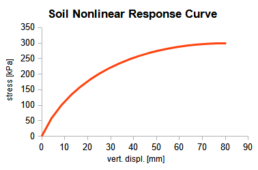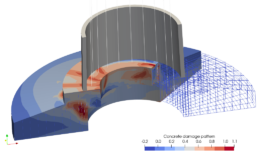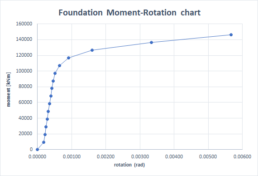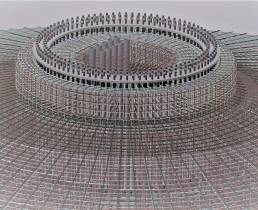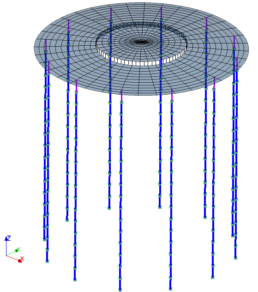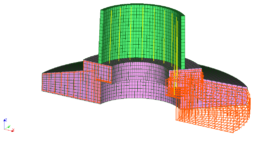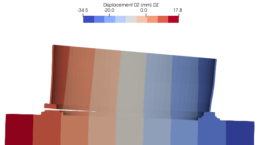3D modeling
3D modeling is used to control every single item of the foundation, including the reinforcement bars.
This enable a rapid detection of conflicts and at the same time a precise computation of the final quantities
Post processing
The post processing of the results is very important to us in order to:
- Collect enough data from the analysis and in the right form
- Enable rapid check of the results
- Provide input to the design
- Produce summary results for reports and meeting with Clients
Most of the tools we use are created in-house, giving us a full control of the design and verification process. For this reason, we are also very flexible in adapting our algorithms to international standards other than European ones when needed and/or required by the Customer. Whenever possible, we perform our designs mainly following Eurocodes and Model Code as a reference.
Numerical analysis
Numerical F.E: models are used to evaluate the internal forces distribution in the foundation . A careful numerical analysis is important to achieve:
- Reliable estimate of the structural response
- Input parameters impact on the structural response
We use well established software to perform numerical simulations and we integrate them with in-house procedures to facilitate input, post-processing and design phase. Recourse to additional coding is useful to:
- Reduce design and computational time
- Reduce errors
- Enable efficient control of the simulations
Different type of models can be used:
- Analytical or “global” models
- Numerical simplified models
- Numerical detailed models
The choice between different models lie in the problem under investigation. We always advise our Customers on the different alternatives and their advantages and drawbacks.
Documentation
The wind turbine foundation design documentation comes out of 3D models of the concrete structure, including the reinforcement and other embedded elements (when available). Normally the design documentation is split into a “basic” level, which is suitable for preliminary evaluations and cost comparisons and a “detailed” level of definition which is then used for certification purposes. Furthermore, “for construction” documentation is produced in order to enable a more refined level of detail, suitable for a safe and reliable execution on site.
On request we can also provide detailed drawing of site equipment, such as shuttering elements and their accessories. These elements are normally in the scope of the civil work subcontractor.
